Cabbage farming is much easier than you might think. This is a comprehensive guide on how to cultivate cabbage in the modern era.
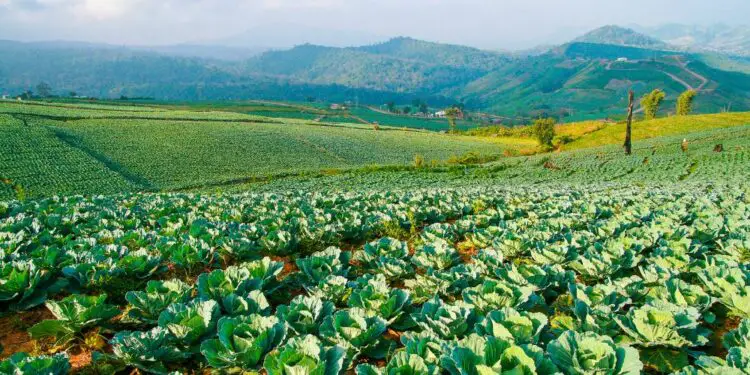
Cabbage is a popular leafy green vegetable of the Brassica family. In most cases, only the spherical cluster of immature leaves, excluding the partially unfolded outer leaves, is eaten. Its naturally spicy flavor makes it a popular ingredient in a wide range of dishes.
Cool climates are ideal for growing cabbage. Using this guide, you will learn how to start your own cabbage farming business. I have explained the growing process from choosing a variety to harvesting.
Here is the overview of cabbage farming.
- Cabbage growers commonly grow seedlings indoors. The time it takes to transplant a seed usually ranges from 18 to 38 days.
- Ideally, the soil temperature should be 75 degrees Fahrenheit, and the light should be bright and direct. The soil temperature can be reduced to 60 degrees F once the seeds have germinated.
- The seedlings are then transplanted into a fertile, well-plowed field that has not been weeded.
- It is important to plant seedlings in rows in order to ensure proper spacing and aeration of the seedlings.
- The best-growing conditions for cabbage are cool, moist climates, and it is extremely hardy to frost.
- A soil pH of 5.5 to 6.5 is ideal but soils that are highly acidic are not conducive to its growth.
- Water is normally delivered by drip irrigation, while fertilizer is applied by fertigation.
- Cabbage varieties can be harvested 75 to 88 days after transplanting. In addition to mechanical harvesters, manual harvesters can also harvest crops.
Here we describe the core things you need to know before or after starting a cabbage farm. Then, check the post to find more information about growing cabbage.
How to Start Cabbage Farming: Planting, Growing, and Harvesting Cabbage
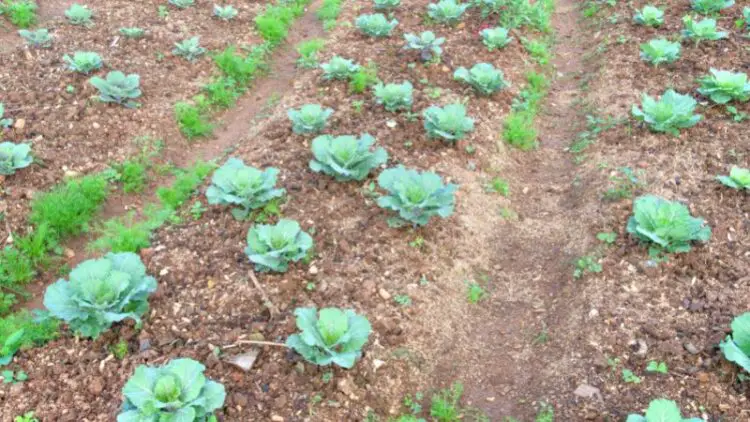
A cabbage can weigh 0.5-4 kilograms. Before planting cabbage farming, Learn the basics of the cabbage cultivation process step-by-step.
The first step will be choosing the best varieties in your locality. Check the local vegetable market and query the demand. This will help you to determine which types to grow in your field.
Soil and the weather play a huge role which directly dominates the outcome. Caring for plants is always a hard job. But learning the tricks can save you time and hard labor. Also, this is a good practice to learn the latest technology regarding anything you do.
If you want to grow cabbages organically, my suggestion will be to read this also: How to start organic vegetable farming for beginners.
Similar to other farming methods, cabbage can also be affected by pests and diseases. Understand pests and diseases better by exploring them. When choosing the species for my garden, I felt like I was in the middle of a deep ocean when I was a beginner.
1. Choosing Cabbage Varieties to Grow
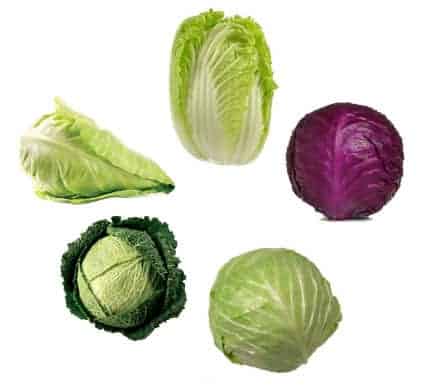
There are surpassing types of cabbages like January king, Choy sum, Napa, Portugal, Pacifica, Lennox, Savoy ace, Huron & Earl Jersey Wakefield, Tropica Cross, SuperCross, Santa, Oxylus, Red Delight, Red Acre, Murdoch, Drum Head, etc. Different cabbages have various qualities based on several conditions like:
- Red & Chinese Cabbage: Planted for fall harvest including “Ruby Perfection & Lei-Choy.
- Golden Acre: Used for quick harvest time. “Primo” and “Stone head” are also used for the purpose.
- Early Jersey Wakefield: This continues splittings.
- Blue Vintage & Cheer: effective against any disease.
- Murdoc: Delicate syrupy leaves.
- Red Delight & Acre: Early and easy-to-grow purple varieties.
2. Preparing the Soil for Grow Cabbages
We know that the cabbages are popular for their adaptability to climatic changes and also soils. So firstly the soil needs to be well-drained. As they are greatly adaptive they can be plowed on sandy loam to clay.
- The ph level of the soil for cabbage farming is within 5.5-6.5.
- At least for good results, the ph shouldn’t fall below 4.5 and it shouldn’t span the range of 6.5 cause it provokes the death of the petal boundaries.
- It’s really crucial to keep this measure. But for better results, you can test your soil near agricultural institutes.
3. Grow Seedlings Indoor
* This step is optional, but recommended. You can also choose to plant the seed directly in your field.
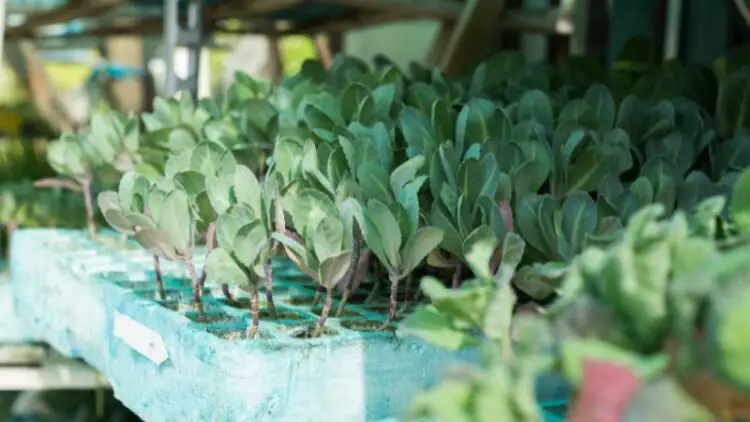
Most varieties do not grow from cabbage head. And for commertial cabbage farming we need to grow seedling in door and then plant them in field.
It takes 5 to 8 days for seeds to germinate at 77°F (25°C). During spring and autumn, you can start seeds indoors 6 to 4 weeks before the last frost. You will be able to harvest winter harvest this way.
Here is how you can germinate seedlings-
- You can use the lid of a foam egg carton as a drip tray by cutting it off.
- Cabbage seedlings dislike transplanting, egg cartons are perfect for starting them.
- Clean and dry it properly.
- Make three or four holes ½ inch apart and ¼ inch deep with a toothpick in each cell of the egg carton.
- Add sterile potting soil mix to each cell of the egg carton. Make sure the soil surface is evenly moistened by placing the flat in a container of warm water.
- Sow two cabbage seeds.
- Water the soil evenly with a plastic spray bottle, but do not allow it to become soggy or wet.
- Place the flat in a clear plastic bag and seal it. To ensure proper air circulation, poke a few holes in it with a toothpick and set it in a warm, bright room.
- Then wait until the seedling germinates. And when they are three days old, use 15-30-15 liquid fertilizers to ensure their nutrient requirement.
- One week before planting in the garden, seedlings should be hardened off. During the first two to three days, seedlings should be kept in the shade, then brought in at night and placed in the sun in the morning.
When seedlings reach 4 to 6 inches (10-15 cm) tall and have 2 to 4 leaves, transplant them once the temperature reaches 50°F (10°C).
4. Choose Suitable Climatic Conditions for Cabbage Plantation
Let’s learn about cabbage farming conditions, whether you want to grow it in a field or in our garden.
- Cabbage prefers well-draining rich soil.
- Growing organic cabbage outdoors requires a cool, moist, and humid atmosphere.
- To grow well, cabbage needs temperatures between 60 and 65 degrees Fahrenheit and no more than 75 degrees Fahrenheit.
- When temperatures drop to 35 or 50 F for 10 days or more, premature flowering can occur.
- The humidity should also be between 90% and 100%, along with the temperature. It is a warm environment that causes bolt cabbages to grow and have a tart taste when they are mature.
5. Cabbage Planting Calendar: Plant them on time.
But it can also be planted in late winter and early spring at a temperature of 40 degrees Fahrenheit. Because the germination procedure starts with this temperature. But some strong seedlings can undergo 20-25 degrees Fahrenheit.
But in the summer season, they can be produced in coastal areas if the temperature is above 80 degrees Fahrenheit. These seeds are anti-freeze survivors. Annually, in the horticulture field, every corps need at least 400 mm-500 mm 0f rainfall.
- The right time to start seeds indoors is six to eight weeks before the last spring frost in order to harvest them in the summer.
- In the summer, seeds can be sown outdoors (or transplants planted) for a fall harvest.
- If your area is very hot and dry, plant late in the summer. Young plants shouldn’t be dried out by the summer sun!
6. Planting Cabbage Spacing (How Far Apart Do I Need to Plant My Cabbage?)
Varieties of cabbage are spaced differently:
- Compact varieties are spaced 30 cm (12 inches) apart.
- For larger varieties to be spaced up to 45 cm (18 inches) apart from each other.
- Spring cabbages should be planted in rows 30cm (1ft) apart and thinned at 30cm (1ft) intervals during late February or early March.
However, when planting your seeds outdoors,
- Cover them with 1/2 inch of soil after planting them 2 inches apart in rows 12-24 inches apart.
- After your plants reach about 5 inches in height, thin them to 6 inches apart when you plant them for the first time in the spring.
- Since the plants require at least 12 inches apart, thin them again by removing smaller heads.
Instead of discarding or composting the plants you remove from your garden, you might want to consider moving them.
To maximize yields and achieve healthy growth, take the following factors into account.
- The rate of seeding is 250-400 grams (9-14 ounces) per hectare
- Plants per hectare range from 40 000 to 50 000.
In modern-day cabbage farming, this is very important. Here some tips for beginners to adopt proper spacing .
FarmingMethod.com
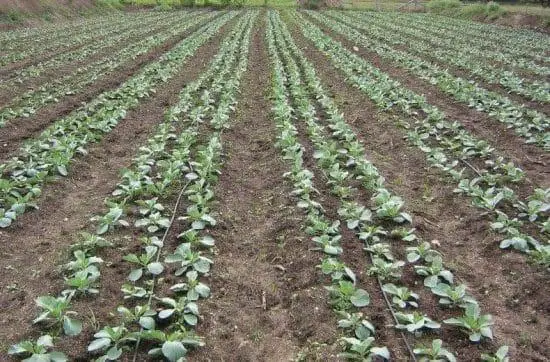
Like other plants, the spacing of plants plays an important role in cabbage farming. Proper spacing can bring you greater profitability.
7. Transplanting cabbage seedlings outdoor
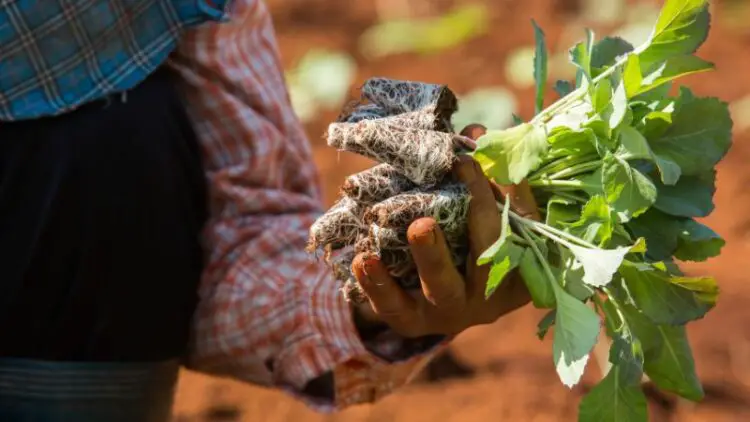
The perfect cabbage planting procedure depends on your soil conditions. But the process described below is the best method to cultivate this vegetable commercially.
If you are willing to plant seeds, check the “Climatic conditions for plant cabbage seeds outdoors” topics to read about the sessions and temperature.
- To get delicate cabbage seedlings accustomed to being outdoors, put them outside for a few hours, then longer each day.
- Temperatures consistently above 40 degrees Fahrenheit can cause cabbages to harden off during the day. Exposure to outdoor conditions will aid their adaptation to a changing environment.
- Ensure that the plants can be easily moved and that they are protected from harsh sunlight and high winds.
- You can use an outdoor shelf with a cover, enclosing three sides at first and gradually exposing more as the plants adjust to the weather.
Now,
Let’s learn about the universal planting procedure
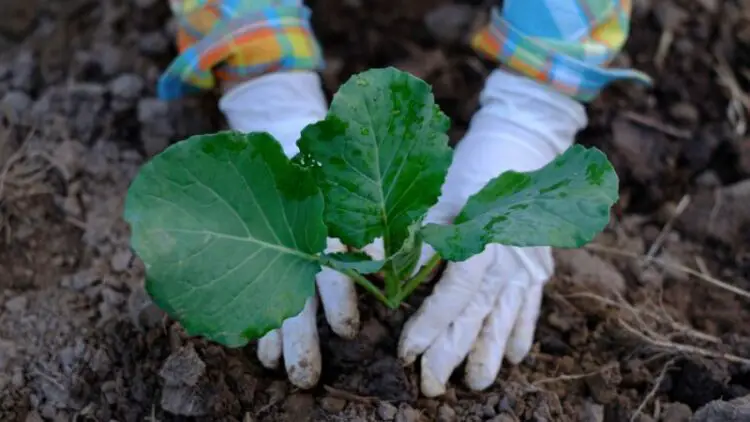
After the last frost or frost date, the cabbages should be planted out. You can start them in the afternoons as well. But if you are going to plant them outdoors, they can be done in the early morning after the sun’s rays have dried up.
- The seedlings are planted in 4-5 levels. The planting depths should be 1/4-1/2″ and 1-5′ is required for the depths of the roots. Height & width must be between 12-15″ & 24-40″.
- The seed rate for the early variety is 500 grams/hectare and for the late variety is 400 grams/hectare.
- The spacing for early maturity is 45 cm from row to row and 30 cm from plant to plant. On the other hand, for the late bloomers, the row spacing is 60 cm and the plant spacing is 45 cm.
- Growing vegetables like Beans, Celery, Cucumber, Dill, Kale, Lettuce, Onions, Potatoes, Sage, & Spinach, Thyme, Artichoke, Beet, and Bush along with cabbages provide extra benefits. After 25 days of sowing seeds, every row needs to be spaced 18″ apart, and for beds, the measure is 15″. The space between rows of two should be 24-30″.
- However, you may separate the corps into two for greater discretion. One is the early variety and the other is a late variety crop i.e carrots, onions, etc. But some of the vegetables require the same value and nutrients as cabbages but they can’t be grown beside them.
- Due to heavy feedings, frequent nutrients, and pests and diseases, the crop cannot be nourished. These vegetables are strawberries, cauliflower, broccoli, and tomatoes.
Tools and Equipment for Growing Cabbages
- Sharp Knife.
- Tiller.
- Fish Emulsion.
- Garden Hoe.
- Organic Mulch.
- Organic Soil Amendments.
- Water-Soluble Fertilizer.
Care for Organic Cabbage Growing Stages
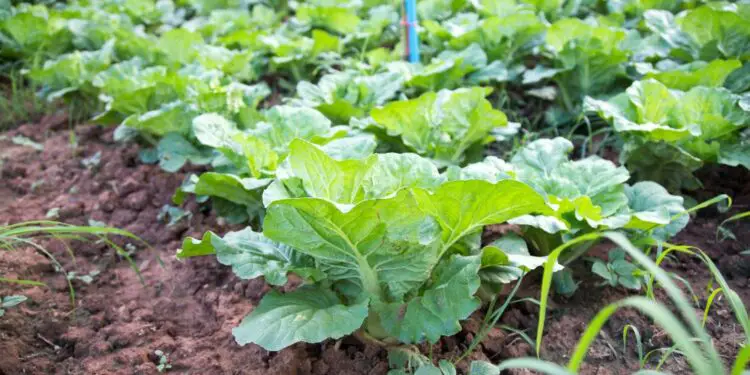
This is an important topic. When we started to write a guide for cabbage farming the first thing we completed is the caring process. There are several tips and tricks, that can save lots of your time. Because this is where farmers feel helpless. Feel free to ask any questions in the comment box below.
Watering Tips
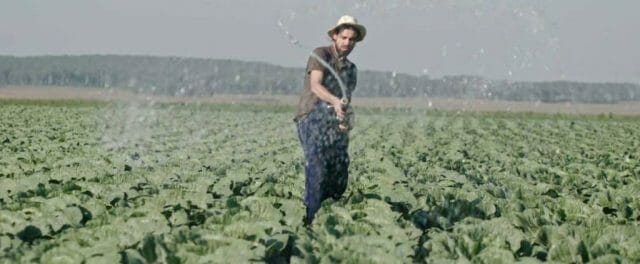
The biggest preservation to looking after the cabbages are watering. It is the hardcore ingredient to keep the plants combined.
- Special attention needs to be drawn to the land in autumn & winter.
- On the other hand, dry out causes plant bolting. It also keeps them from drying out and exterminates the bitter flavors of the cabbages.
- It needs 11/2 inches of rain per week but if the climate condition of your region isn’t that rainy you’ve to keep it hydrated by watering yourself.
- Approximately, 10 liters of water is necessary per meter square of land. Soaker hose, jugs, the regular hose can be used for the purpose.
- The nurturing land has to be waterlogged weekly. The pressure shouldn’t be too strong so the soil gets decayed.
- You need to be sensible while watering the root & upper levels. Cause the roots to retain the moistures of the soil and the upper levels reassure the pests & diseases but balancing the measure it can be solved.
- Yellow leaves must be removed that are damaged by pests & insects.
- Like any other vegetable, it doesn’t do well in mushy soil for a long period. If for any reason the soil turns out very dry you’ll have to dig 3 inches down and water it if the soil shifts to moisture then you’re in a good shape.
As we know that the cabbages are the vast consumers of water and other factors they need to be side-dressed with composts, potassium, & nitrogen to keep the soil rich. After developing new leaves 20-20-20 can be scattered. It is prohibited to start fertilization after 4-5 weeks later when the plants will be growing solidly and the germination procedure is over.
Mechanism Of Irrigation
The cabbage is an adaptive vegetable but can’t endure dehydration. In the winter, the procedure is done by interim irrigation and that requires 8-10 days. But the dry season has to be persistent and constant. A limited amount of water should be kept on the furrows to rehydrate the corps in the dry season. An exceptional drainage system needs to be made for rainfall conditions. Drizzle irrigation needs to be made for continents with less rain.
Weed controlling tips
Weeds make the land useless junk. They mostly damage the roots of the cabbages. The first elimination time for the weeds is after 2-3 months when there half-grown. the process is done by dredging. The drilling method needs to be precise so the plants don’t get bruised. Along with this hoeing herbicides also helps to annihilate the weeds. And they are Alachlor & Metolachlor.
But I am afraid to say, Beginner farmers, do not realize the weeding procedure completely. Hope! you do not make mistakes. Note this instead.
Control the weeds in time, You should keep the cabbage garden clean during that time.
- Control weeds in growing stages.
- you need to perform it before and after fertilization is applied.
- Sometimes on very hot and shining days weeds help to preserve water, but I warn you to be careful.
- In circumstances like this only remove the unwanted plants near the roots. Although I will suggest you for using mulch or a shade. Mulch is beneficial not only to help your cabbage with water but also to protect them from the extreme sunlight in your garden.
Alachlor
Alachlor is not as strong or, adequate as Metolachlor. But it helps to oversight the spectrum of the weeds. you’ve to memorize that this herbicide can’t slightly be overused.
Metolachlor
It helps with the depressed conditions of the plants.
Fertilizer Requirements for Growing Healthy Cabbage
As they are heavy feeders they also prescribe highly effective fertilization like potassium, nitrogen, phosphorus, composts, and urea instead of ammonium sulfate for acidic soils.
The fertilization applying limit for cabbage farming is 11/2 pounds per 100 square feet. Organic farmers will apply Organic fertilizers after 20-30 days of planting if requires. Try to avoid fertilizers produced with human excreta.
For only conventional farmers, this will apply. Though it is against organic farming and bad for health. We suggest testing the soil and providing the needed vitamins to the soil. For ensuring faster and bigger vegetables use nitrogen, potassium, and phosphorous.
- 12-12-12 or, 10-10-10 is the fertilizer that obligates well with cabbages.
- These numbers are sealed in the containing process of the fertilizer which represents how many organic ingredients the corps needs.
- For example, every cabbage land requires 200-250 kilograms of nitrogen per hectare.
- Utilization needs to be strengthened with phosphorus and potassium. The leftovers can be side-dressed after a week or 3 after the transplanting. Boron & Molybdenum can be sprayed during this term.
Common Pests & Diseases
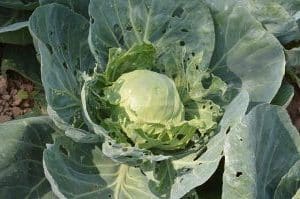
While growing the cabbages the corps faces many kinds of diseases & pests. These diseases & pests reduce their color, essence, weight, quality, and advancement of them.
The pests that cause inflict to the corps are Cabbage worms, Cabbage loopers, Aphids, Cabbage root maggots, Flea beetles, Cutworms, Nematodes, Bagrada Bug, and American Bollworms.
The diseases that spoil the production are Blackleg, Club-root, Dumping Off, Downy Mildew, Leaf spot/Ring spot/Target spot, Powdery Mildew, White Blister, White Mould, White leaf spot, Wire Stem, etc. But the primary diseases are caused by Sclerotinia & Botrytis.
These catastrophic components cause devastation to the stems, wilts, heads, seedlings, flowers, and even an entire plan. But uttermost of the diseases and pest causes damage to the leaf and root.
Control: Chemical components like Carbaryl, Spinosad, Neem oil extracts, Permethrin, and insecticidal soaps. But some of the diseases and pest attacks may not have a cure. In this regard, you can take consultation with your near governmental agriculture institutes.
Harvesting
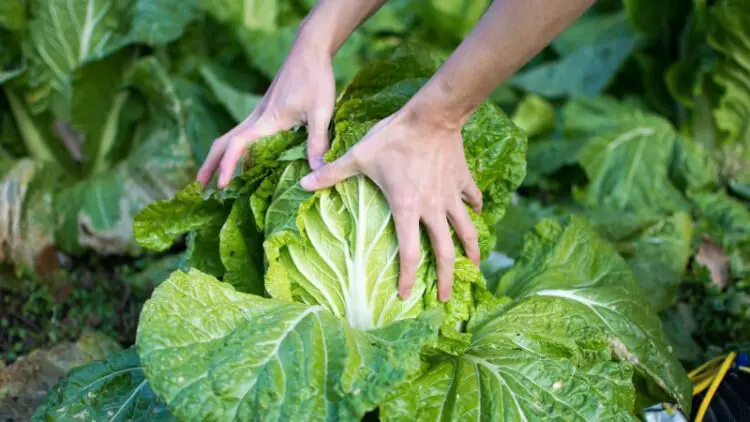
The cabbages should be harvested when the heads are substantial and ripened. It takes around 71-88 days. The best way of harvesting this crop is to compress it with your own hand if you feel the strong & firmness of the head then your cabbage is ready to harvest.
Sometimes some adult looks great, healthy, & ripened but inside it’s soft and unfit to be harvested. So don’t judge the visualization cause it can be tricky to examine every single plant with your own hand.
Early produced cabbages’ weight varies from 1-3 pounds. Firstly you need to cut the stem underneath the head with a sharp knife and detach the head from the plant but leave the leaves and other parts on the ground. A week later those leaves and other parts will form as a little cabbage maybe it will be small but it has a great flavor.
Storing Tips and Techniques
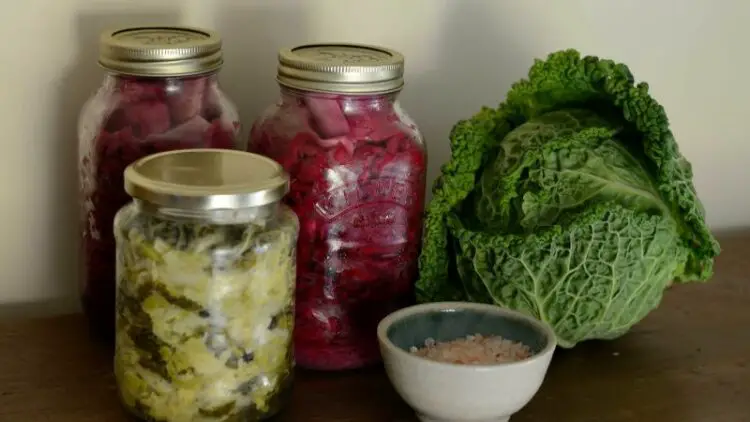
The storage system is one of the most important procedures in the field of cabbage farming. If the inhalation of them goes well the product loses its nature but a proper storage system slows down the respiration. The temperature of the storage system needs to be 0 degrees or, 32 degrees Fahrenheit.
Moreover, it has to be at least 90% or, high cause if the humidity level is less than 80% them will lose its precipitation. Refrigeration is the best way to handle the humidity of the cabbage. It can be stored in the fridge for 2 weeks by only packaging it with plastic.
Furthermore, It needs to be dried out before the storage system. However, in the tuber cellar position, the cabbage can be refrigerated for nearly 3 months. They shouldn’t be stored with fruits particularly with Apple even if the proportion of temperature & the humidity level is the same cause they exhale ethylene which discolors the cabbage.
Finally, If you are a beginner at cabbage farming you may face difficulties. Remember we are here! Bookmark us! If needed place a comment below.
We would love to help you with growing cabbage. Well! do not forget to share this with your friends!

Cabbages can be intermix with onions to control pest
Thanks
Can you pliz forward this information to my email address,,,I will be berry greatful for that,,,the notes are accurate the will be useful if I had them
Good to know. I am a beginner and at least I have an Idea of it all. But I would appreciate if you can send me a brief presentation highlighting all steps in days and/ or weeks from nursery to harvesting, and any other recommendations, ie fertilizer types.
Yeah very very important
Asking questions are really pleasant thing if you are not understanding something entirely, but this article
offers fastidious understanding yet.
Can you pls post this cabbage production information into my Email address ?
1.I have 3 weeks old seedlings in a nursery what do I need to apply on them to become more healthy? 2.I have other small ones that i have already transplanted and they are 3 weeks old on the farm what do i need to apply to them?
Thanks for the knowledge, may you kindly send me the notes in my email
Join our eamil list, you can find it below homepage.
This is a topic which is close to my heart… Take care! Exactly where are your contact details
though?
Check contact us here.
May you kindly send the information on my email
May you kindly send the information on my email.thnk you so much for the informative info
Comment .please my cabbage is two months on the bed because of land
Very informative article i am a new cabbage farmerwould like you to explain the idea of adding compost a time earlier to transplanting, what is the advantage?
Clarifying this…
You can apply compost when transplanting. However, if you are cultivating in a large land it will be time-consuming. If that period is too long it may hurt the plants that are uprooted from the seedbed. Regardless to say- When you are continuously growing crops in a field may cause a deficiency of nutrients.
Now, in this situation, you can either apply compost to the soil (if you don’t grow inorganic) before.
Thanks now I know how to grow cabbages
You are welcome.
This really made me pay attention. The writing skill alone kept my interest. Thank you for sharing!
Happy to read this insight information. I am tilling the land for planting cabbage for the first time in Kenya.
I hope I will manage after reading your article above.
Informative.
Hello,
Thank you for the idea about cabbage farming.
I am Bwambale Eriano from Uganda.
I would like the procedure for cabbage farming from nursery to harvesting, well simplified. If you have them kindly send on my Email.
Hello, everyone. Advise some website with recipes where you can find a lot of salads for both novice cooks and professionals.
As well as tips on cooking and other information. thank you.